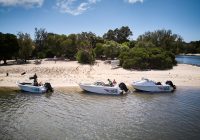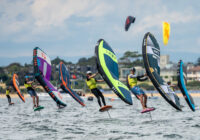Surely you’ve heard the claim that 10 percent of our recreational angling fraternity catches 90 percent of the fish? This is not only true, but also a classic example of what’s known as the “Pareto Principle”.
Also referred to as the 80-20 Rule, the Pareto Principle is a popular concept among economists. This “rule” asserts that, on average, 80 percent of outcomes result from 20 percent of inputs. So, in a business, 80 percent of sales will be generated by just 20 percent of customers. In an orchard, 20 percent of the fruit trees will tend to produce around 80 percent of the annual crop. On a sporting team, 20 percent of the players will account for roughly 80 percent of the points scored across a season… and so on it goes. You get the picture, I’m sure.
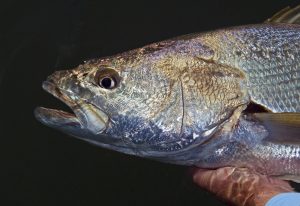
Mulloway or jewfish are a classic “10-percenters” fish: a species that rewards the investment of a little extra time and effort.
Obviously, results in real-life instances don’t always precisely fit this mathematical 80-20 model, but it’s amazing how often they end up very close to that mark, especially over time. The ratio may be more like 70-30, or it could skew the other way and be closer to 90-10. But the bottom line is that a relatively small proportion of inputs tend to produce over-sized results at the other end: thus that oft-quoted 10 percent of anglers catching 90 percent of the fish.
Non-fishers and casual anglers often talk about “luck” when it comes to explaining this imbalance. There’s no doubt that “chance” (another term for luck) can play a significant role in one-off captures, and even runs of good fortune. But, as with any form of gambling, these statistical anomalies flatten out over time. That’s why, in casino parlance, the house always wins. In the end, luck runs out.
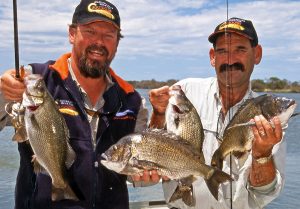
“The harder I work, the luckier I get” could well be the mantra of 10-percenters like Starlo and Bushy (seen here in their younger days, field testing the Squidgies they developed).
The genuine “10-percenters” of fishing aren’t lucky. They’re good at what they do. They also tend to put in 20 percent more effort than the rest of the field (there’s that Pareto Principle again!). As South African-born golfing legend, Gary Player, was fond of saying: “The harder I work, the luckier I get!”
You probably know some of fishing’s “10-percenters”. You may even be one yourself. If you’re not, I’m sure you aspire to join their ranks — otherwise I doubt you’d be reading this newsletter. The good news is that anyone can become a fishing 10-percenter. It’s not a genetic trait inherited at birth, nor some sort of magical power gifted to a few fortunate souls by a fairy’s secret touch. Instead, it’s mostly the product of trying a bit harder.
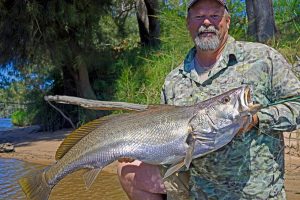
Luck might catch you one jewie, but it won’t help you score them with any regularity, nor will it make you a genuine “10-percenter”.
Tying better, stronger knots; checking hook points and changing or re-sharpening them as necessary; catching your own bait instead of buying it from the servo; re-spooling or top-shotting reels more frequently; test-swimming lures and tweaking their actions and buoyancy to suit specific situations; examining the stomach contents of the fish you keep for clues to their diet… these are all examples of the increased inputs that produce disproportionately large outcomes. Remember: 20 percent in, 80 percent out!
Lots of casual fishos — I sometimes call them “danglers” — are perfectly happy to prop their rod up on a forked stick, lie back in a comfy chair and crack a can of their favourite beverage while waiting for a foolhardy fish to find the slowly-thawing prawn skewered awkwardly onto a rusty, blunt hook and anchored to the bottom with a massive sinker. More power to them! They’re outdoors, and they’re having fun. But they’re unlikely to become ten percenters.
On the other hand, if you’ve stayed with me this far, you’re either already a 10-percenter, or you’re keen to become one. If so, you’re also one of those people I’ve dedicated my life as a fishing communicator to helping. Teaching people like you to fish smarter, catch more and have fun doing it is what motivates me, gets me out of bed in the morning, and keeps me excited and engaged about the passionate pastime that has shaped my life.
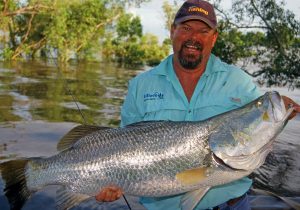
You never forget fish like your PB saltwater barra! Fishing has shaped and dominated Starlo’s life.
In the early days, I achieved this aim of helping others to become 10-percenters through magazine articles, how-to books, and on-stage presentations at shows and expos. Later came TV programs, videos and DVDs. But nothing stands still. The world of communication is constantly evolving. Today, magazines have all-but vanished, and few people seem to bother reading books. YouTube has largely replaced videos and DVDs, while streaming services are fast taking over from free-to-air TV. For many, social media is their new fishing club and brains’ trust. The internet is everywhere and it’s all-pervasive. It’s a brave new world, and those who fail to evolve get left behind and are quickly forgotten.
I made the decision a long time ago not to be a dinosaur stuck in the tar pit, or an angry old man yelling at the clouds. I may be well into my 60s now, but I try not to waste time bemoaning the loss of the “good ol’ days” (even if there are a few things I miss!). Instead, I embrace the new and appreciate the flexibility and reach offered by modern technologies. Truth is, it has never been easier to speak directly to the people who most need my help than it is in today’s hyper-connected world. We are all but a mouse-click or a screen tap apart.
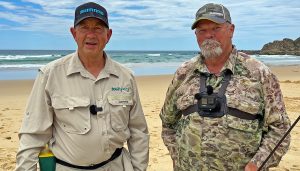
Old blokes like Roger Osborne and Starlo have learnt a few tricks over the years. These days, they’re using the internet to share what they know with others.
I see the next phase of my life-long role as a fishing communicator, educator and entertainer lying squarely in the digital world. As a lot of you know, I’ve already embraced YouTube, and viewers seem to be loving my content (my channel’s called “Starlo Gets Reel”, if you haven’t discovered it yet). Next, I’m moving into the field of on-line courses and webinars, and these look like being popular, too. Some will be free, while others carry a modest fee.
My first free webinar (dedicated to what I’ve identified as the five keys for success when using soft plastics) is on later this month. Spaces for it are limited and filling fast, but if you’d like to register for it, use this link or the button below. It’s obligation-free and you don’t even have to turn up if you’ve registered, but obviously I’ll be disappointed if you don’t. I’d love to see you there.
We live in an era of churning disruption and ceaseless change. This can be a bit daunting at times, especially for older people like me. But it’s also an incredibly exciting time to be alive. These days, if you want to learn something new, or sharpen a skill you already have, it’s relatively easy to find help on-line. Sure, some bits of advice will be more valuable than others, but as Fox Mulder famously claimed on the “X-Files” TV show: “the truth is out there”… I’d love to help you find it.
Tight lines,
![]()
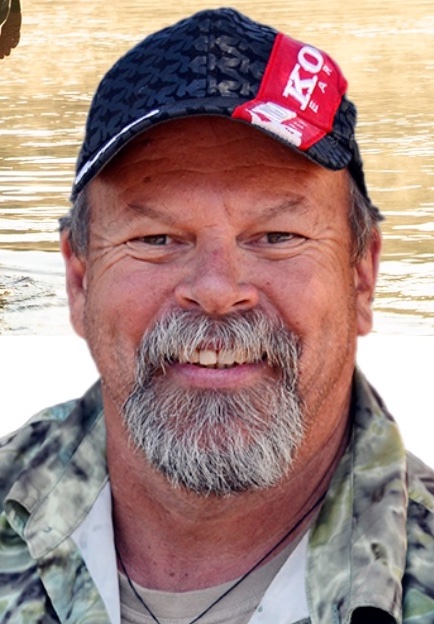
Steve (Starlo) Starling is an Australian sports fishing writer and television personality who has appeared in many of Rex Hunt’s Fishing Adventure programs on the Seven Network.
He has published twenty books on the subject of angling, as well as thousands of magazine articles.
Starlo has scripted and presented many instructional videos and DVDs, and been a Researcher and on-screen presenter for a number of Australian angling and outdoor television programs.
Follow Starlo Gets Reel on Youtube for some of the best, educational and most entertaining fishing viewing on-line.
Click on the banner below for a direct link to the Channel.






